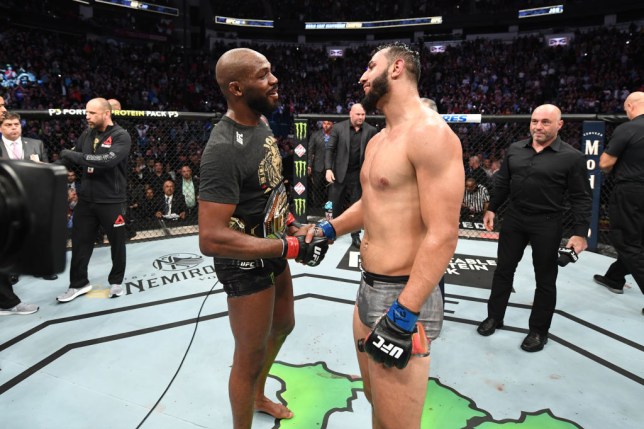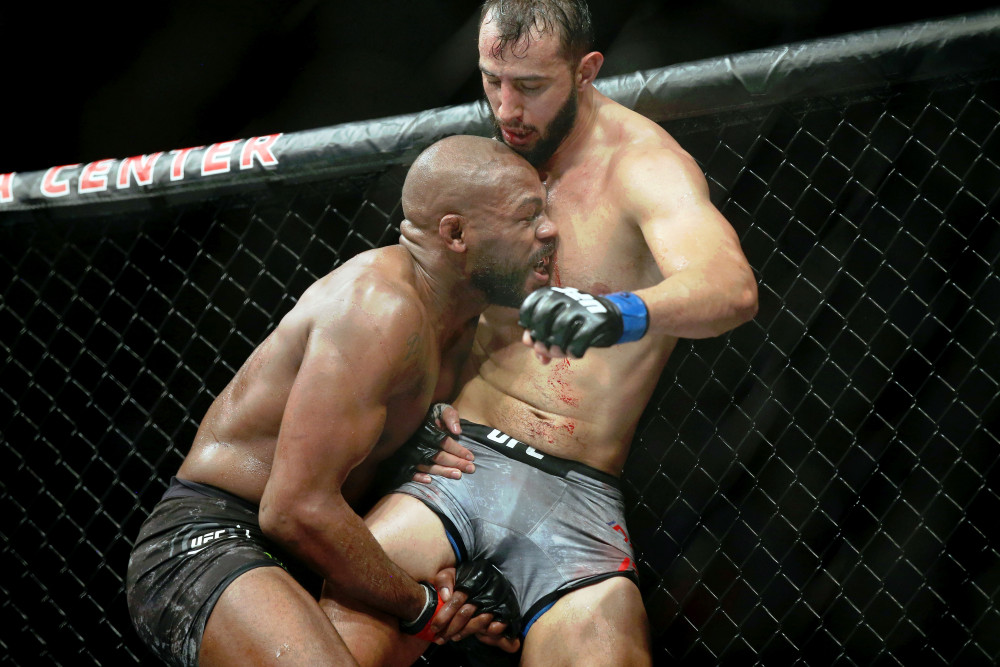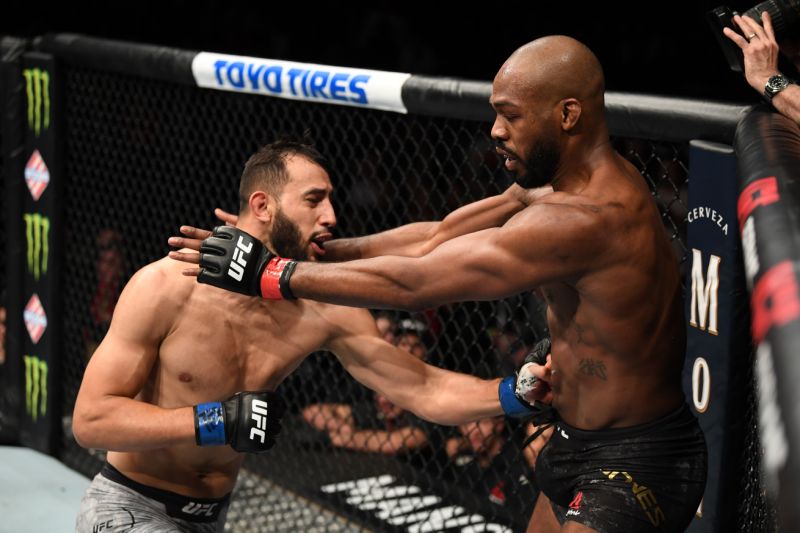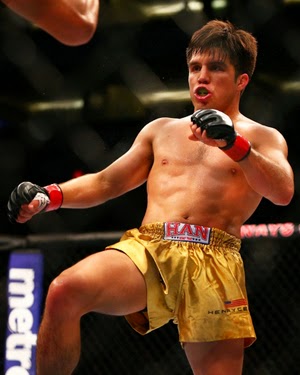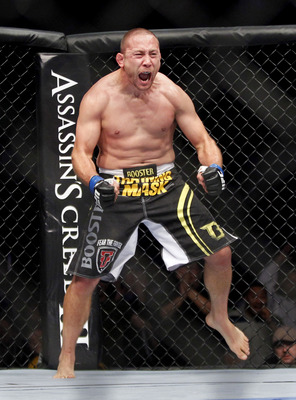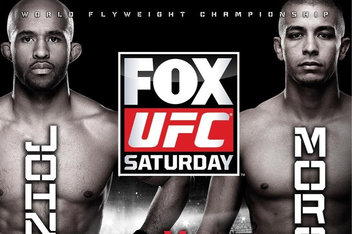There is a lot of controversy regarding Jones vs. Reyes. A large segment of fans, writers, and fighters have come to the conclusion that Jon Jones was soundly beaten.He wasn’t dominated, he wasn’t finished, but according to the masses — both informed and uninformed — Jones was outstruck, outslicked, outsmarted, and outskilled. Unfortunately, the opinions of the fans, the fighters, the writers, and the promoters do not matter, outside of possibly creating pressure for a rematch or helping Dominick Reyes become more of a draw. Ultimately, only the opinions of the three men and/or women judging the fight determine the winner, regardless of how inattentive, uneducated, or biased said judges are.
I won’t argue against the decision in the UFC 247 main event, but being that there is so much public sentiment against it, what I will do is argue for the position, examining the camps, the fighters, the fight, and — using my previous experience scouting fighters and building gameplans — provide insight into how the judges came to their conclusion. More importantly, I will discuss what fighters do and camps train for, and how that helps guide the judges to a conclusion.
1) Reyes Missed the Target
Reyes did good work in the fight — kicking to the legs and to the body, countering Jones’ pressure, aggressively countering Jones’ attempts to initiate striking exchanges, and doggedly letting his hands go in exchanges. This helped him out in a few key ways:
(a) By aggressively countering Jones, he limited Jones’ ability to really ramp up the pressure that would force him against the cage and allow Jones to tee off with strikes or to attempt extended grappling exchanges designed to wear down Reyes or chain together takedowns.
(b) Countering Jones’ attempts at striking limited Jones’ ability to control the pace and to pick when and where the fight took place.
(c) Not fearing the takedowns and aggressively engaging in exchanges kept Jones from being able to find his way into clinches to wear on Reyes, get takedowns, or punish Reyes from those spots.
Reyes accomplished all those good things — disrupting Jones’ rhythm, releasing some of the pressure he applied. But in doing all these things, one thing was overlooked in the fight by many. Reyes, much like Thiago Santos when he faced Jones, missed, and missed a lot. Now was it Holly Holm, Katlyn Chookagian bad? No. But it was noticeable in that he wasn’t able to separate himself from Jones (decisively) in tight rounds; more importantly it hurt his gas tank, which hurt him later in the fight during the decisive championship rounds. He wasn’t able to punish Jones off of failed takedowns, nor was he able to really open up offensively to take the necessary chances to possibly finish the fight or put a stamp on it.
2) Reyes Setting A Pace He Couldn’t Maintain Or Build On
Much of Reyes’ success was based on the activity and mobility he showed early. He took the play away from Jones, disrupting his rhythm and manipulating distance and angles so Jones couldn’t get to the spots he wanted early. That limited his ability to make his physicality a factor, and limited his opportunity to (safely) get to the body with strikes or make Reyes burn energy by fighting off takedown attempts or jumping back to his feet when those attempts were successful. On the flipside, the same pace that allowed Reyes to race to a comfortable lead also served him up to being walked down by Jones later in the fight. Reyes couldn’t build on the pace, which would have assuredly allowed him to pull away from Jones. Worse yet, he couldn’t maintain it, which would have put him in position to keep the distance he previously established in the earlier rounds. Jones had very few technical solutions to what Reyes was doing, as he had very few answers to what Santos and Alexander Gustafsson did; the only solution Jones had was to continue to apply pressure that would (as it did in those two fights) slow his opponents down and allow him to take over the fight in the championship rounds.
3) The Good of Jackson Wink
On the plus side of Jackson Wink, they know how the game is played and they will build a strategy that will allow them to create or control the narrative of a fight. As much as people discuss what actually happens in a fight, none of us really knows; we comment, score, and react based on what we see, as well as how we interpret it. Jackson Wink understands how the fight game is played; as Dana White once said, they are point-fighting, decision-winning, sport-killers. Here is what they did:
(a) Had Jones try to make big movements late in the round, or to continue pressing late in the round. Effective or not, these things paint a narrative of Jones being in control because he is always going forward, or that he may have turned the fight with a big offensive action (it’s called stealing a round, and Sugar Ray Leonard is the guy this is associated with most). It leaves an impression of control at the end of the round that can carry over into the next round as far as judges are concerned.
(b) Maintained or raised Jones’ pace, Reyes started out hot, making a big impression. However, the moment his volume, mobility, or snap began to fade was a moment that looked like Jones’ long game was working. My rule with fighters is never set a pace you can’t maintain or build on. There are three reasons for this: 1) exhaustion hinders your offense and defense, making you vulnerable; 2) seeing you slow, breathe heavy, and stumble gives your opponent courage and reinvigorates them; and 3) your lowering of volume, activity, and durability signals to judges that your opponent is getting to you, which makes it seem like you have been playing into their hands from the second the fight started, and that they are moments from pulling away or finishing you. In this fight, all three came into play.
(c) Kept their fighter poised, Jones is very careful to not give away that he’s hurt, tired, or frustrated; he sells to judges that nothing is landing or is backing him up consistently, nothing is scaring him off, and nothing is slowing him down. But his opponents look gassed, hurt, inaccurate, and less physically imposing late than they were early. That makes an impression that can determine a fight for the judges.
Jackson Wink tried this same approach earlier, in a fight between Holm and the all-time great Cristiane Cyborg. In this fight, Holm used movement to keep Cyborg from putting combinations together or bullying her. Holm also initiated clinches, tying Cyborg up, backing her up, and using extended grappling exchanges to hopefully exhaust her; more importantly, it gave the impression that Cyborg wasn’t in control, that the unstoppable juggernaut was being physically neutralized by a fighter who wasn’t supposed to be in her class physically. Jackson Wink knew Cyborg’s reputation and they used that narrative against her to put their fighter in the position to win what was deemed an unwinnable fight by fans, pundits, and fighters alike. This didn’t work for Holm because Cyborg had the veteran experience to not overextend herself physically; she left reserves in her tank to ramp up the volume and add snap to her shots to punctuate the championship rounds in her favor. In the Reyes-Jones fight, Reyes spent an inordinate amount of energy to establish a lead, to deny being put in certain spots, to defend takedowns or get back up after successful takedowns; in those championship rounds, however, he had little in reserve to REALLY finish strong (i.e. land fight altering shots or at least maintain or build on his mobility and volume). Jackson Wink played into the narrative of Reyes fading and used it to their advantage.
4) The Bad of Jackson Wink
For years I have railed about the technical limitations of Jackson Wink; as is common with fans of mixed martial arts, the results of the fights overshadowed the events in the fight. Jones has never really been developed as a technical striker. What his camp did was develop a series of individual techniques that maximized Jones’ length, creativity, durability, and physicality. The kicking-based striking, the kicks to the knees, the frames used to maintain distance, and the single punch-based style were all created to exploit MMA fighters’ inability to apply pressure through clean technical positioning and footwork; fighters couldn’t consistently get past his length to land clean shots, much less a combination or series of shots. This allowed Jones to control pace and place due to length alone, not through real layered or balanced skill on the feet. But as fighters have evolved in size, length, athleticism, and skillset, Jones’ strategy, while still effective to a degree, does not allow him to dominate in the manner he has done over the length of his career.
Jackson Wink no longer corners the market on athletes with unique size, length, athleticism, or physical toolkits. Now that those advantages no longer exist, it seems Jones doesn’t have the fundamentals to fall back on, and Jackson Wink lacks the technical knowledge to effectively install the necessary skills to make up for Jones’ physical decline or maximize the strategic approach they take when building a game plan for an opponent. Instead of flustering his opponents with spinning kicks and elbows, high amplitude takedowns, knees, and shoulder locks, Jones has now been reduced to navigating his technical deficiencies with veteran savvy, durability, and conditioning. This allows him to stay in fights long enough for a less seasoned, less conditioned, and strategically limited fighter to get tired or make a mistake; when that happens Jones inevitably pulls away, or at least he used to.
5) Reyes Is A Work In Progress
Dominick Reyes is a big, strong, long, explosive, and conditioned athlete. There are few fighters who can match him in those regards, meaning that his lack of breadth and depth of skills can’t be exploited by his opposition. Most UFC light heavyweights are seasoned but physically declining athletes who no longer have the cardio or durability needed to extend a guy like Reyes long enough for him to make enough mistakes or gas enough for them to take over. In the case of the less experienced fighters, they have the durability and conditioning, but lack the all-around skill set and savvy to make Reyes pay or put him in spots where he can’t recover.
This doesn’t overshadow the fact that Reyes makes errors that are only manageable because of his natural physical tools, not because he has actually learned how to minimize or neutralize their impact. His takedown defense is much more about his physical strength, mobility, and explosiveness, and while that is effective in the short term, as shown in the Jones fight, it can hinder him against an opponent who is capable of handling his natural tools and his volume-based kick-centric fighting style. When those things don’t clearly and decisively determine fights, his cardio issues and his lack of balance in regards to his striking leave him a little exposed. I am not saying he didn’t win the fight against Jones, but regardless of how you saw the fight going, you clearly saw the limitations of Reyes’ style, skillset, and fight IQ. He is young and raw, but already an elite fighter based on style and talent. Now we just have to see if he will show the technical progression to maximize his tools, not just use them as a crutch.
Jon Jones vs. Dominick Reyes was a fight that caught the collective attention of the mixed martial arts world, as for the first time we saw the previously unbeatable Jones look mortal, ineffective, and to some degree inefficient. Not only were his numerous technical holes exposed (which we had seen before), but his prodigious strength and physicality, which no one had an answer for previously, were essentially neutralized. The purpose of this piece wasn’t to ignore the work done by Reyes or overstate the work done by Jones. It was to give some insight into both fighters, their abilities, IQ, techniques, and how that affected the action and the decision we saw on Saturday night.
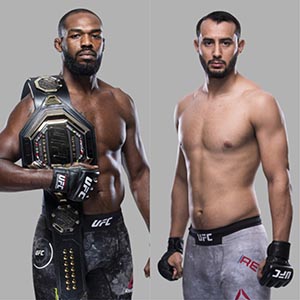
• Jon Jones vs. Dominick Reyes (UFC Light Heavyweight Championship): Jon Jones def. Dominick Reyes via unanimous decision (48-47, 48-47, 49-46).
|
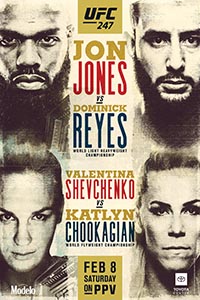 UFC 247: Jones vs. Reyes took place February 8, 2020 at Toyota Center in Houston, Texas.
|

